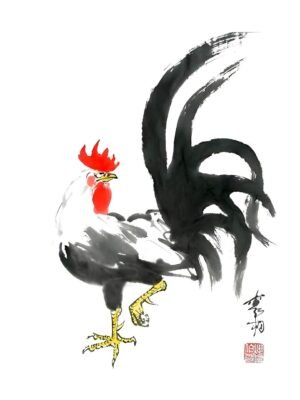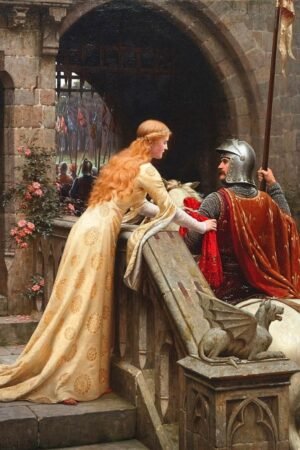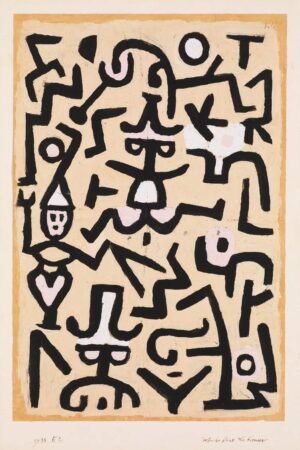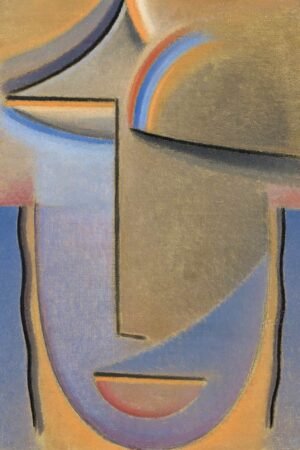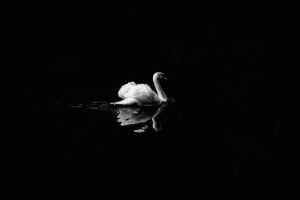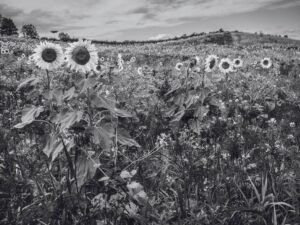What is Abstract Expressionism and Color Field Painting?
Abstract Expressionism is known as a revolutionary movement in 20th century art. This art movement, which emerged in the United States in the late 1940s, was shaped by artists’ efforts to explore individual freedom and emotional intensity after the traumatic effects of the Second World War. The rise of fascism in Europe and the devastation brought by the war forced many artists to migrate to America, making New York in particular the center of modern art. Abstract Expressionism was influenced by movements such as Cubism, Surrealism and Fauvism in Europe, but overcame them and developed a completely original approach.
This movement has two main sub-branches: Action Painting and Color Field Painting. Action Brushstrokes is a method in which painters emphasize energy and spontaneous expression by aggressively applying or throwing paint onto the surface. Color Field Painting, on the other hand, takes a calmer approach. In this style, artists create simple yet expressive compositions with large, flat areas of color.
Color Field Painting combines the emotional impact of abstract art with minimalism. The main goal of this style is to make the viewer mentally and emotionally connect with colors. Most works rely entirely on the power of color, without any figurative elements or intricate details. Especially large-scale canvases draw the viewer into the painting and offer a physical experience.
Among the most well-known artists of this movement are Mark Rothko, Barnett Newman and Clyfford Still. Mark Rothko created works that allow the viewer to descend into emotional depths with the colors applied in layers on the canvas. Rothko’s works often evoke a sense of meditation and reflect the complexity of the human soul. Barnett Newman is known for his minimalist approaches. Especially the vertical lines called “zip” are a characteristic feature of his works. Clyfford Still is an artist who maximized the expressive power of abstract painting with sharp color contrasts and large surfaces.
This movement shaped the course of modern art in the second half of the 20th century. More than just an art style, Color Field Painting offers viewers the opportunity to experience the sheer power of color and form.
Browse our collections to buy posters and canvas prints of iconic works by the most famous artists of this movement: Abstract Wall Art Prints or Abstract Expressionism Art Prints
Important Artworks of Abstract Expressionism Color Field Painting
Abstract Expressionism, and especially Color Field Painting, is replete with many unforgettable works that have left their mark on the history of modern art. These works have left a profound aesthetic and philosophical impact, reflecting the personal expression and creative approach of the artists.
Mark Rothko’s “No. 61 (Rust and Blue)” (1953)

One of the most iconic of Mark Rothko’s works is No. 61 (Rust and Blue). Reflecting Rothko’s typical style, this work consists of large and rectangular blocks of color. Created with orange, blue and rust tones, this painting invites the viewer to a meditation of color. Rothko’s works are usually designed to be exhibited in small galleries or private spaces. This allows the viewer to fully focus on the work and experience the depth of color.
Barnett Newman’s “Vir Heroicus Sublimis” (1950-51)

Barnett Newman’s “Vir Heroicus Sublimis” is one of the pinnacles of Color Field Painting. This huge 2.4 meter high canvas is composed of vertical “zip” lines cutting a red surface. Newman created this work to express the sublimity and heroism of human emotions. Reflecting the artist’s minimalist approach, the work also gives the viewer the feeling of moving in a large space.
Clyfford Still’s “1957-D No. 1” (1957)

Clyfford Still’s works are considered one of the most original and powerful examples of Color Field Painting. “1957-D No. 1,” with its sharp color contrasts and large surfaces, is one of the works that best reflects Still’s style. In his works, the artist generally adopted an approach that relates human emotions to nature. The gigantic dimensions of the work make the viewer feel small, while the impressive intensity of the colors evokes a sense of inner discovery.
“Mountains and Sea” by Helen Frankenthaler (1952)

One of the most beautiful examples of lyricism in Abstract Expressionism is Helen Frankenthaler’s “Mountains and Sea”. Combining color fields with subtlety, the artist used pigments poured onto the canvas with a watercolor-like technique. This work reflects both the artist’s admiration for nature and the expressive power of colors.
Works Sold at High Prices
Abstract Expressionism works have reached the highest values in the art market. For example, Mark Rothko’s “Orange, Red, Yellow” sold for 86.9 million dollars in 2012. This shows that Rothko’s works attract collectors as much as their emotional impact. Barnett Newman’s “Black Fire I” sold for 84.2 million dollars in 2014. These prices demonstrate that Abstract Expressionism is one of the most valuable movements in modern art.
These works have gained an important place in both art history and the art market, proving the aesthetic and emotional power of Color Field Painting.
Pioneers and Most Popular Artists of Abstract Expressionism and Color Field Painting
Abstract Expressionism, and especially Color Field Painting, has been home to many artists who have had a profound impact on the 20th century art world. These artists used the power of color and abstract forms to reflect both individual and universal emotions.
Mark Rothko: The Dance of the Soul with Color
Mark Rothko is one of the first names that come to mind when it comes to Abstract Expressionism. The Lithuanian-born American artist used blocks of color in his large-scale canvases in a minimal yet expressive way. Rothko’s works are intended to convey deep emotions and a spiritual experience. For example, his use of warm and cool color transitions invites the viewer into a meditation-like state of mind. Rothko emphasized the effect of his works on the human soul by saying “people crying in front of my paintings prove that I am doing something right”.
Barnett Newman Minimalism and “Zip” Lines
Barnett Newman is one of the artists who best represents the minimalist approach of Color Field Painting. The vertical “zip” lines he frequently uses in his works symbolize the human relationship with infinity. Newman’s works invite the viewer to search for a deeper meaning within the simplicity of the canvas. For example, in “Onement I”, he divided the color field with a single vertical line, evoking the feeling of bringing together two different faces of the universe.
Clyfford Still: Combination of Color and Nature
Clyfford Still is considered one of the most original figures of Abstract Expressionism. Still’s works are generally more intense and dramatic than those of other artists. Sharp color contrasts and large surfaces express Still’s admiration for nature and man’s place in it. Unlike other Abstract Expressionist artists, Still followed a more independent path and was selective about exhibiting his work.
Helen Frankenthaler The Rise of Women
Helen Frankenthaler is a name that solidified the place of women artists in Color Field Painting. Using her unique “soak-stain” technique, she added a transparent depth to her works by pouring paint onto canvas. This technique made Frankenthaler’s works, which explore the connections between nature and emotions, both lyric and aesthetically powerful.
Popular Artists and Their Contemporary Influences
In addition to these pioneers, artists such as Ad Reinhardt, Sam Gilliam and Morris Louis also made important contributions to the development of Color Field Painting. Ad Reinhardt’s minimalist works focusing on black tones helped modern art to reach a deep abstraction. Morris Louis’ bright bands of color took the dynamism of color fields to a new dimension.
Modern Influences
Even today, the influence of Abstract Expressionism is felt throughout the modern art world. Color Field Painting continues to inspire both traditional and digital art platforms. At Contemporary Art fairs and auctions, the works of these artists still attract a great deal of attention.
Their vision has left an important legacy, not only in terms of aesthetics, but also in terms of making sense of the human connection to the universe. The pioneers of Abstract Expressionism are the most brilliant representatives of this unique period in art history.
Discover Our Latest Art Prints
Explore the latest additions to our curated art collection, designed to inspire every room.
-

Chinese Rooster Art Print
Price range: $23.00 through $139.00 This product has multiple variants. The options may be chosen on the product page -

God Speed Art Print by Edmund Blair Leighton
Price range: $23.00 through $209.00 This product has multiple variants. The options may be chosen on the product page -

Paul Klee Comedians Handbill Abstract Art Print
Price range: $23.00 through $209.00 This product has multiple variants. The options may be chosen on the product page -

Abstract Head of woman, Evening Print Alexej von Jawlensky
Price range: $23.00 through $209.00 This product has multiple variants. The options may be chosen on the product page -

White Swan Floating on Dark Water Wall Art Print
Price range: $23.00 through $209.00 This product has multiple variants. The options may be chosen on the product page -

Black and White Sunflower Field Wall Art Print
Price range: $23.00 through $209.00 This product has multiple variants. The options may be chosen on the product page


